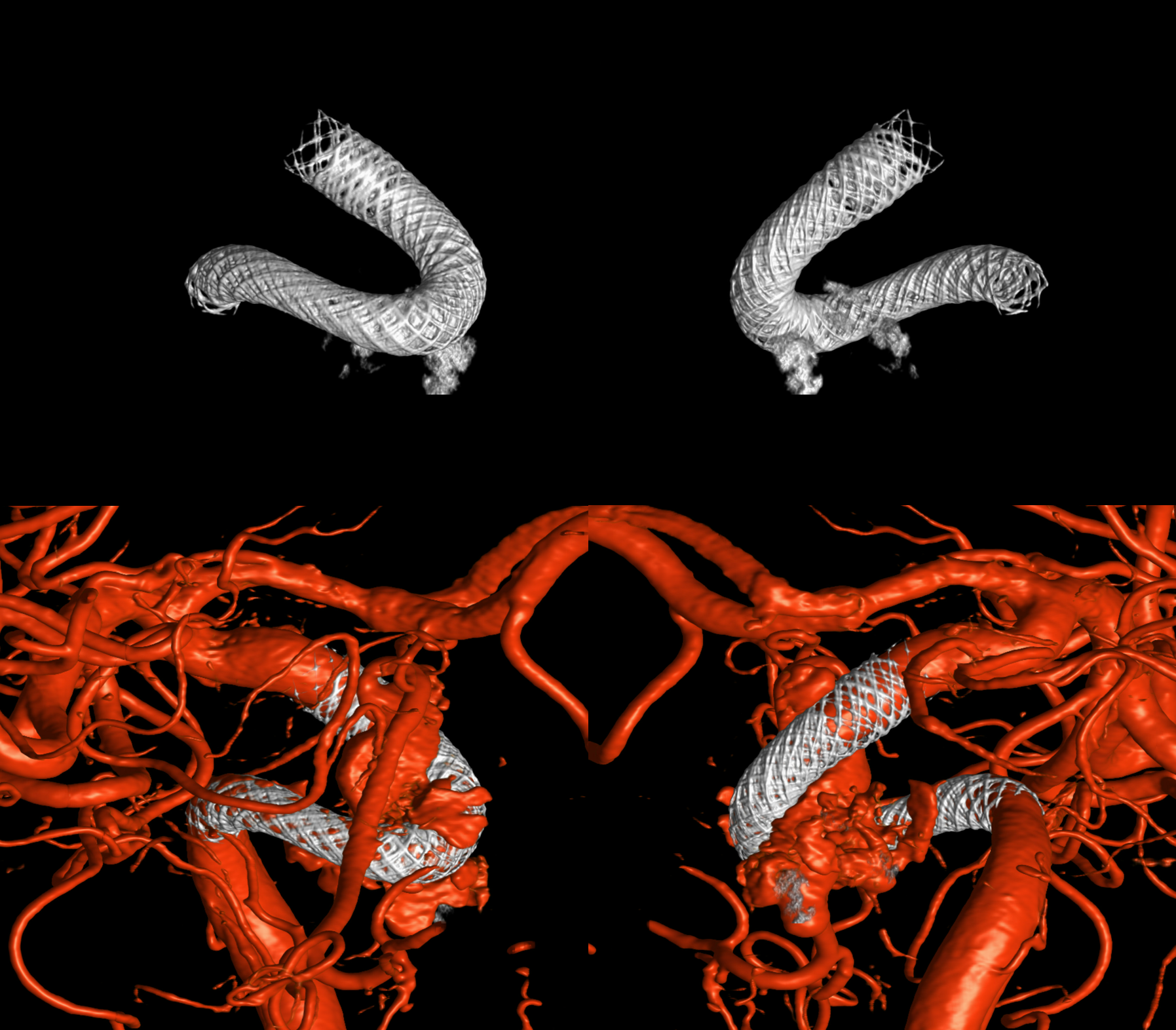A nice example of what happens when a large aneurysm is handled in a “one and done” approach — even “two and done” in this case. The answer is that it works for small ones. Does not work well for big ones. See Pipeline Device Properties and Pipeline Device Aneurysm Selection (aka why things fail) for more info. Everyone knows that this is not a one-and-done shop. Here is why:
Unruptured aneurysm presenting for Pipeline
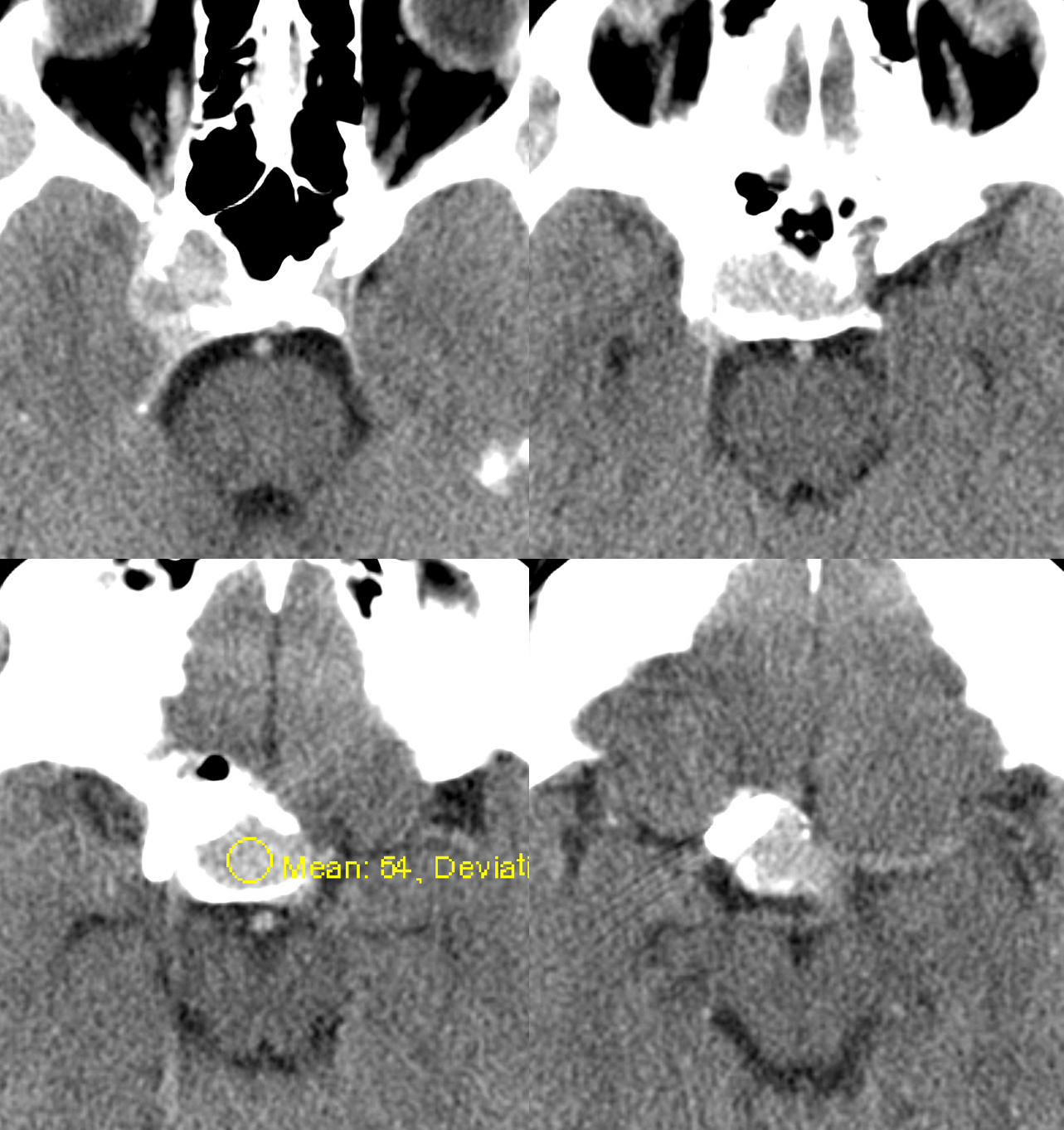
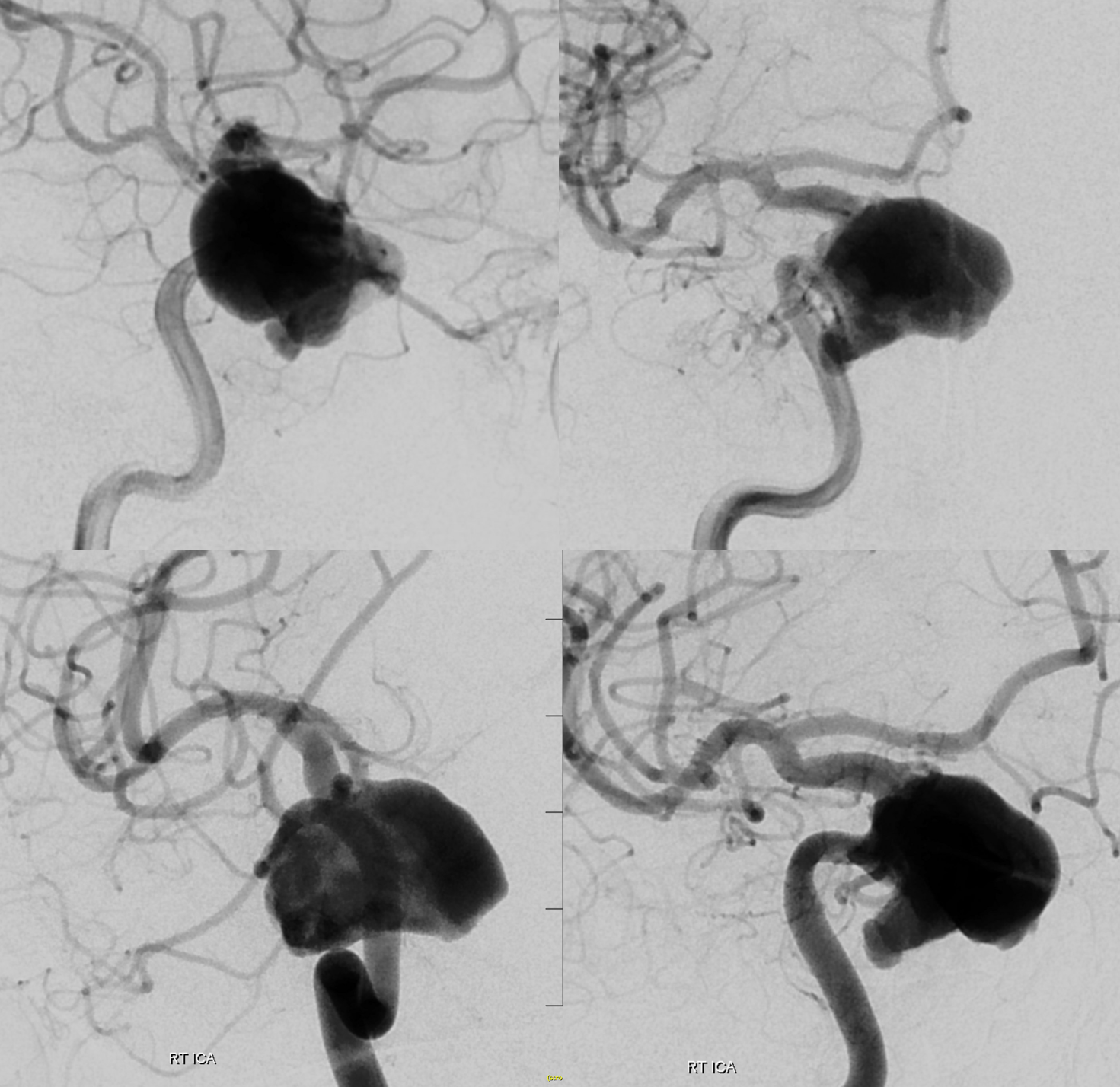
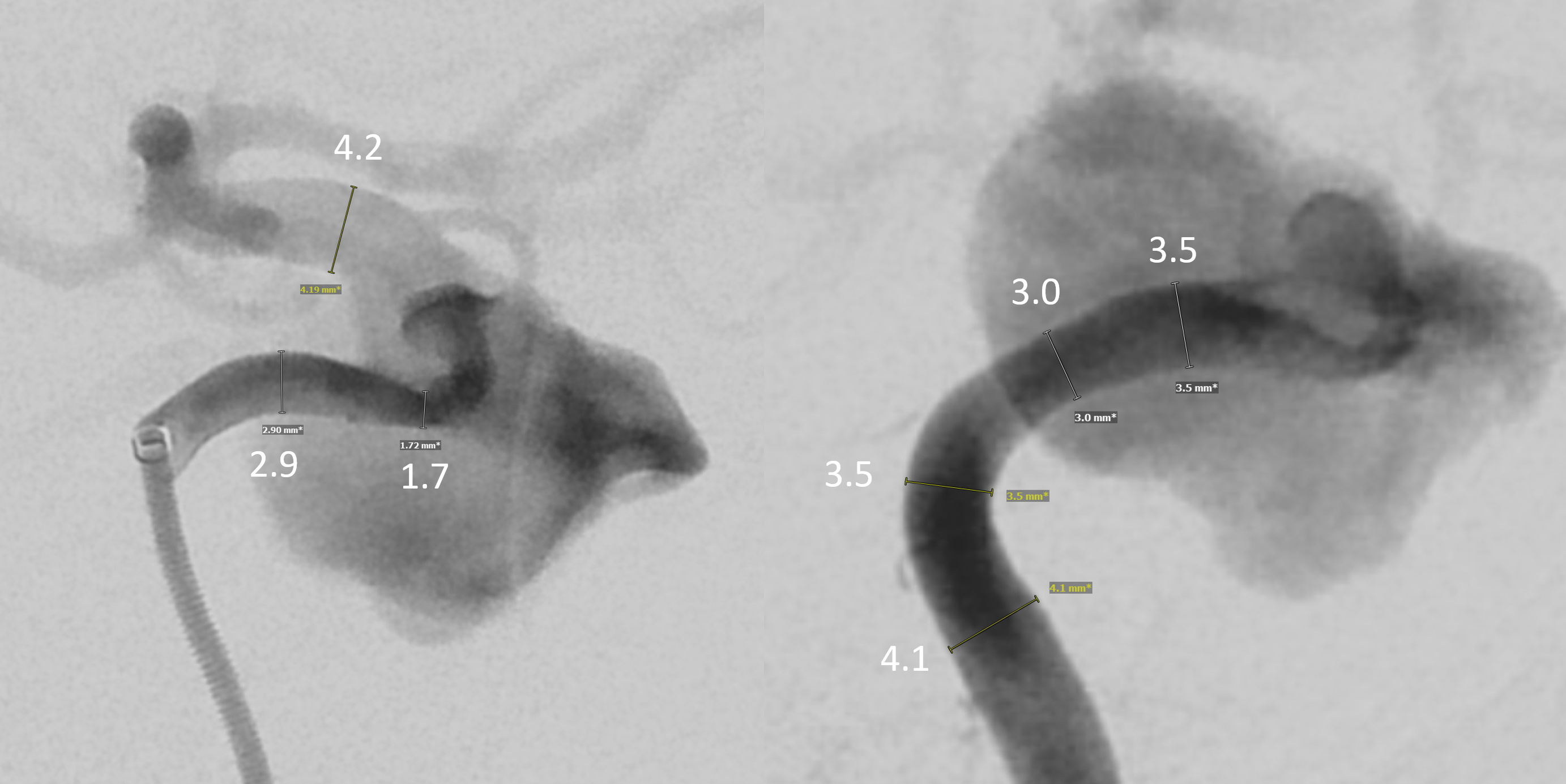
Post 2 PEDs — 4.25×18 and 4.5×16
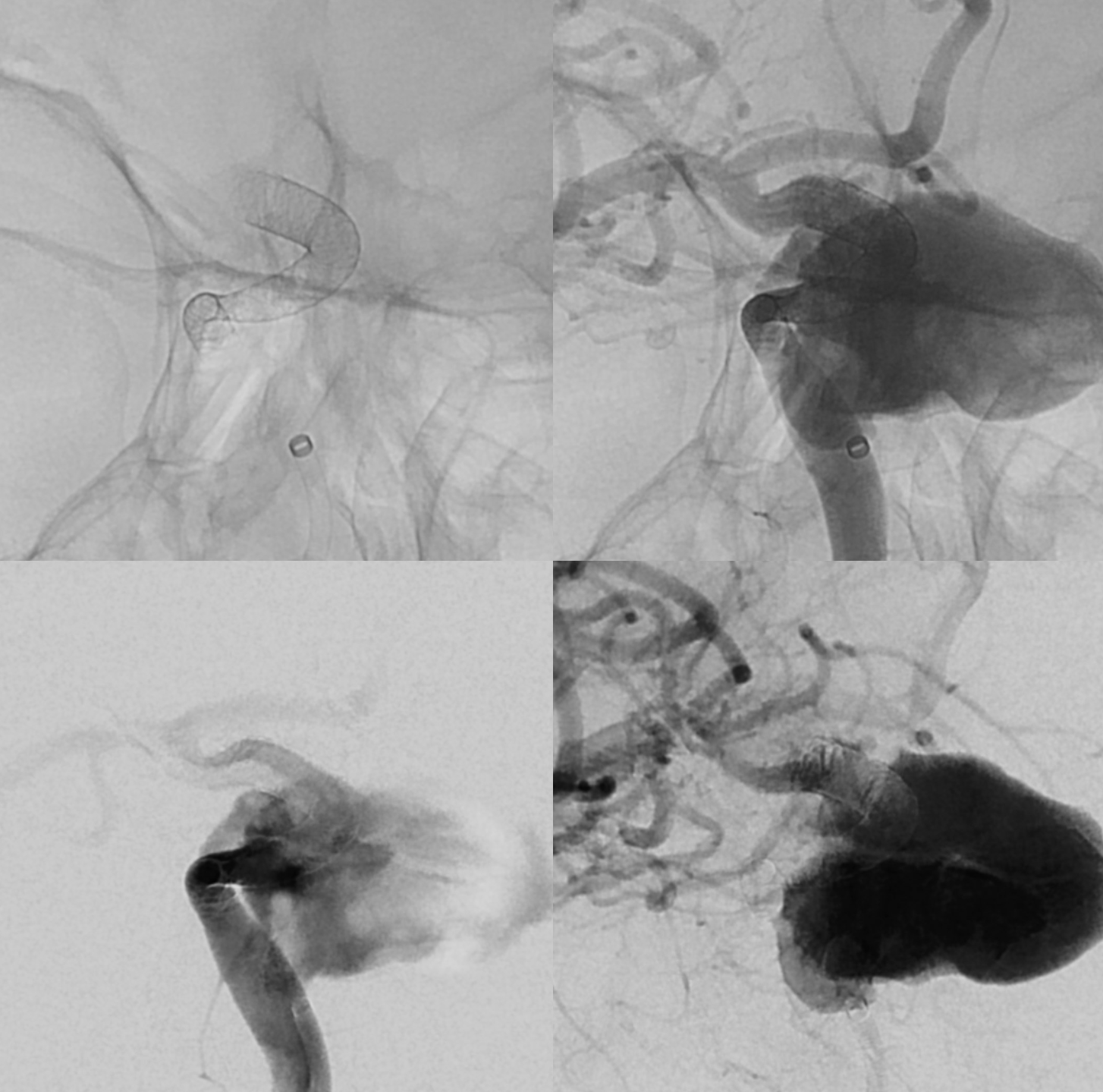
Its important to make sure that long PEDs are well-expanded throughout their deployment length. This may require angioplasty. Sometimes the vessel is narrowed due to aneurysmal mass effect. however here this was not the case — see images above. The stenosis below is a problem for the future
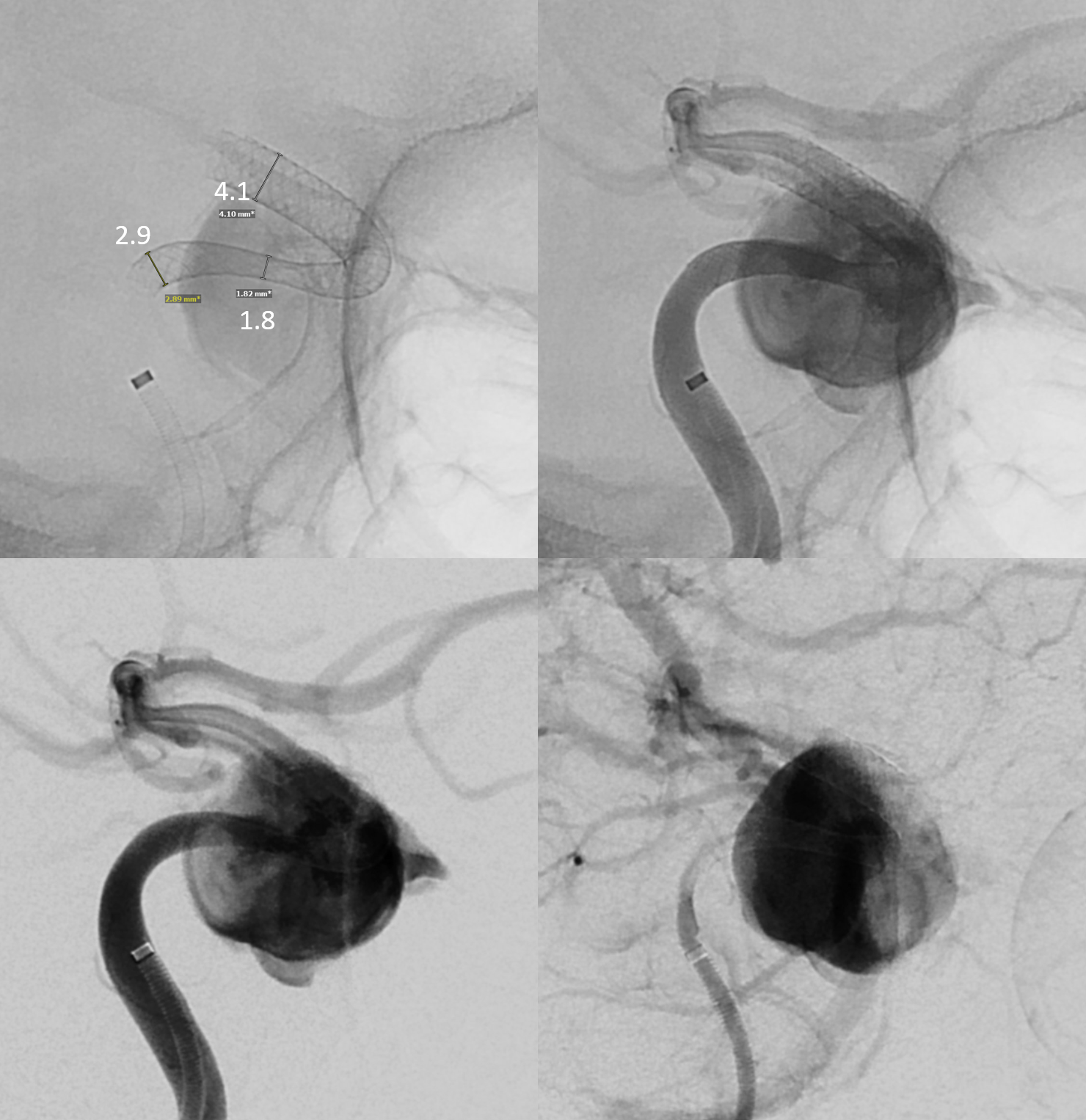
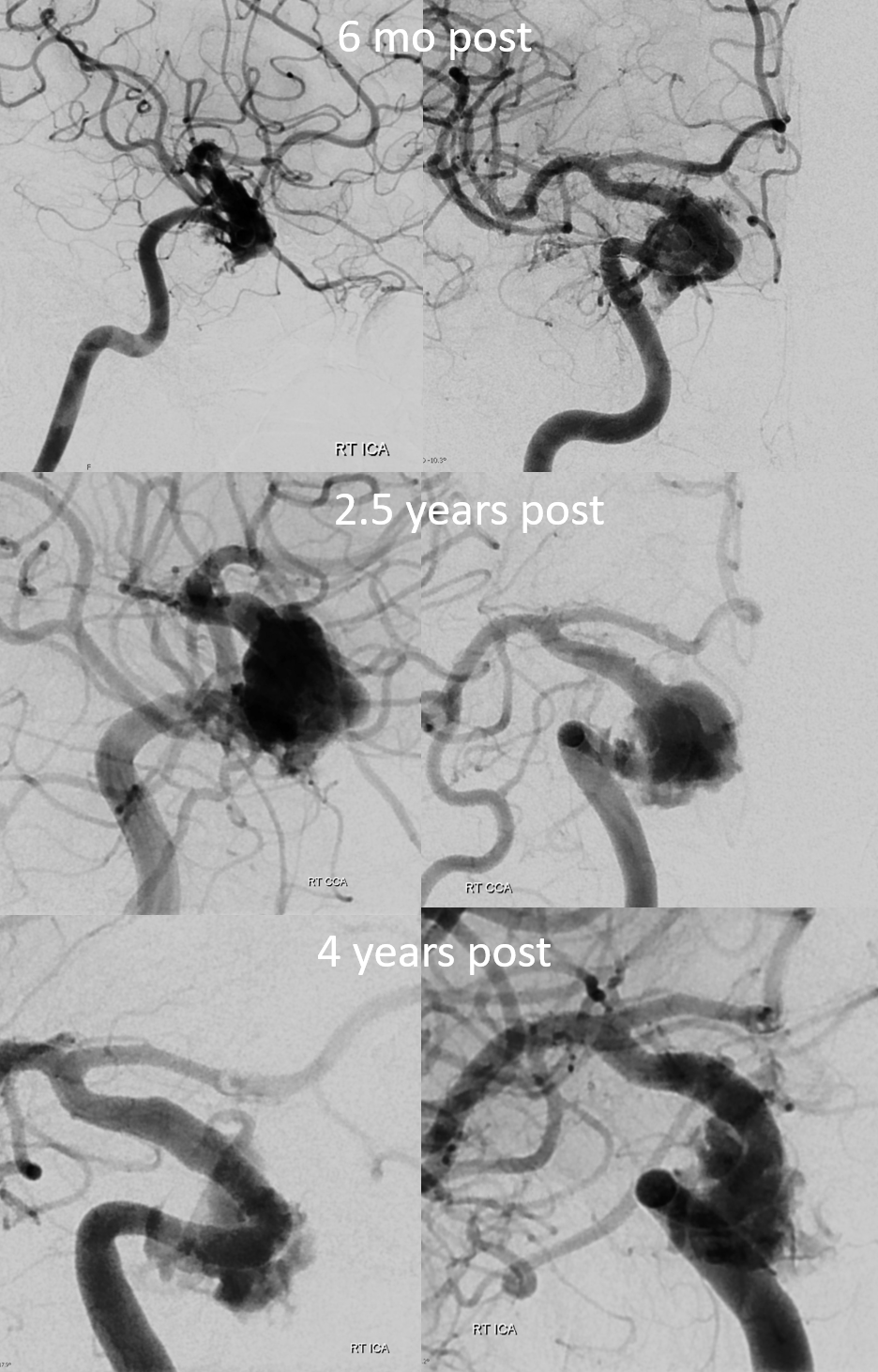
There has been remodeling of the construct — stenosis improved spontaneously, but partially. There is still much filling of the aneurysm.
Pre-retreament DYNA CT. See in how many places the braid lines up to effectively negate use of second device. The solution is to use more devices upfront and vary diameter more.
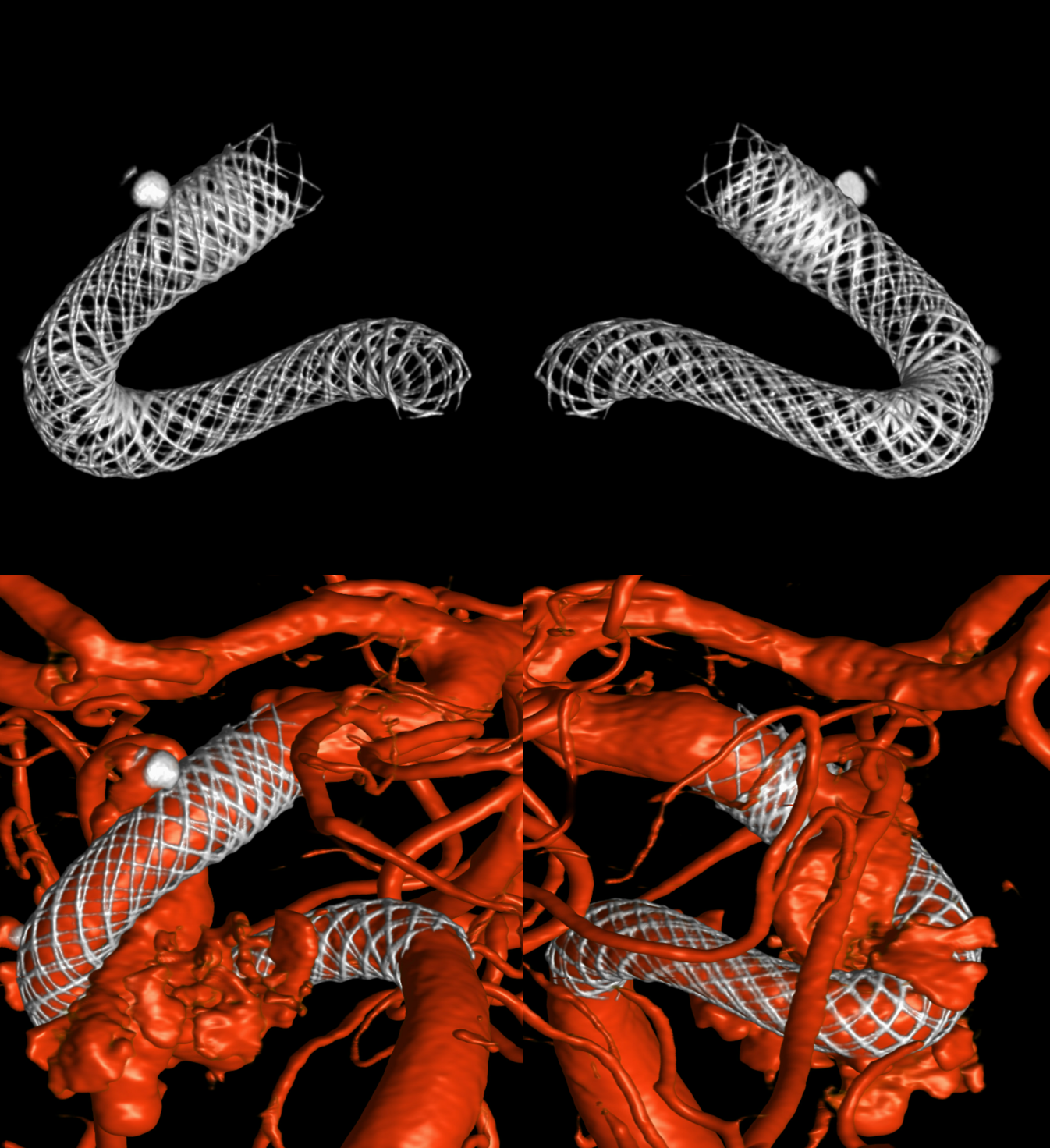
Four more devices are added. Yes, its ok. Big aneurysms take lots of coils too. And more than a few clips often enough. The key is to know what is needed.
Look at image below. it appears as if there is malapposition of the newly added devices to the vessel wall. That is not the case. What happens is the device apposes the endothelialized vessel. Every time re-treatment is needed the vessel is narrowed more and more, as devices are added to the neointimal layer. Which is another reason to do it right the first time.
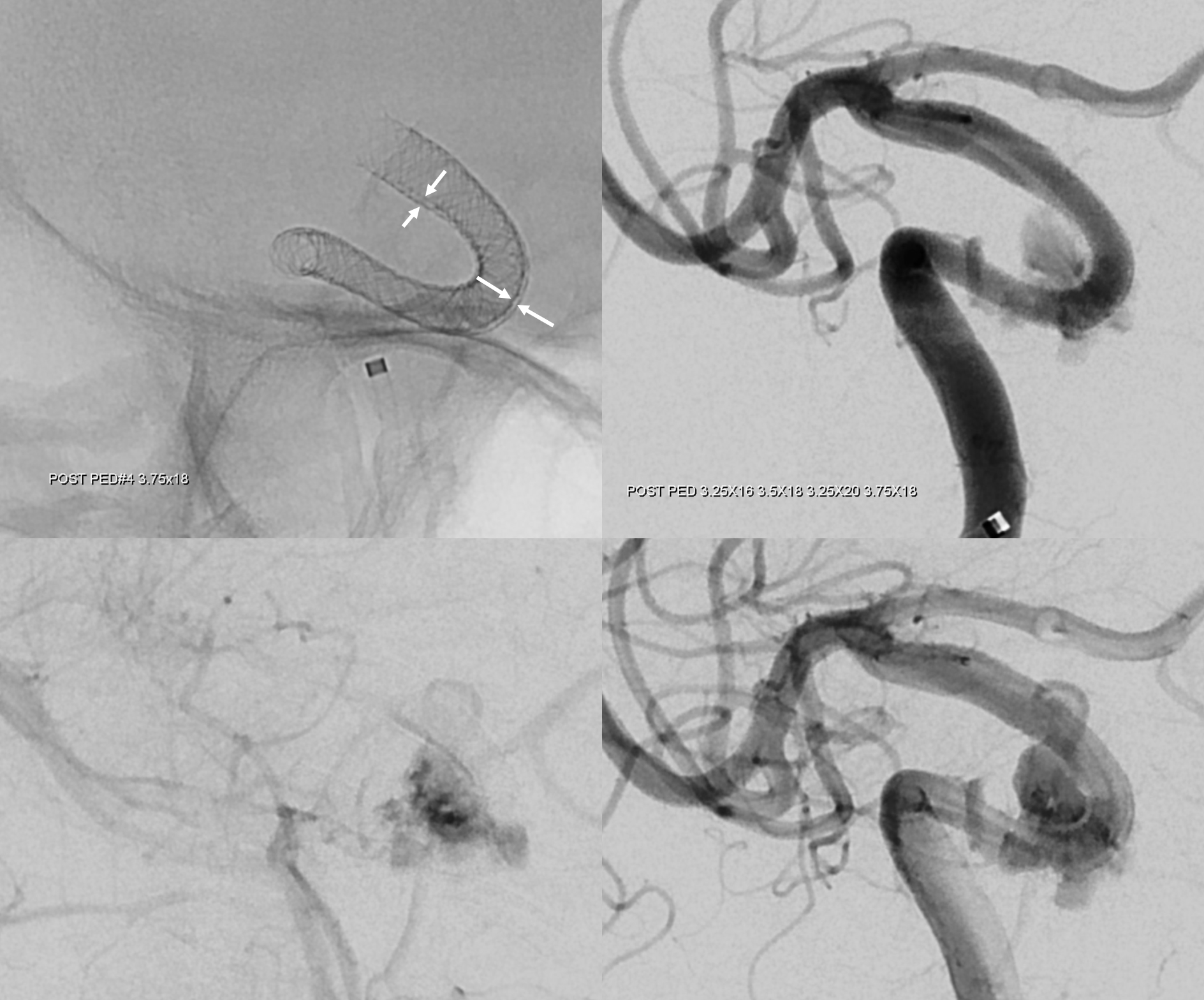
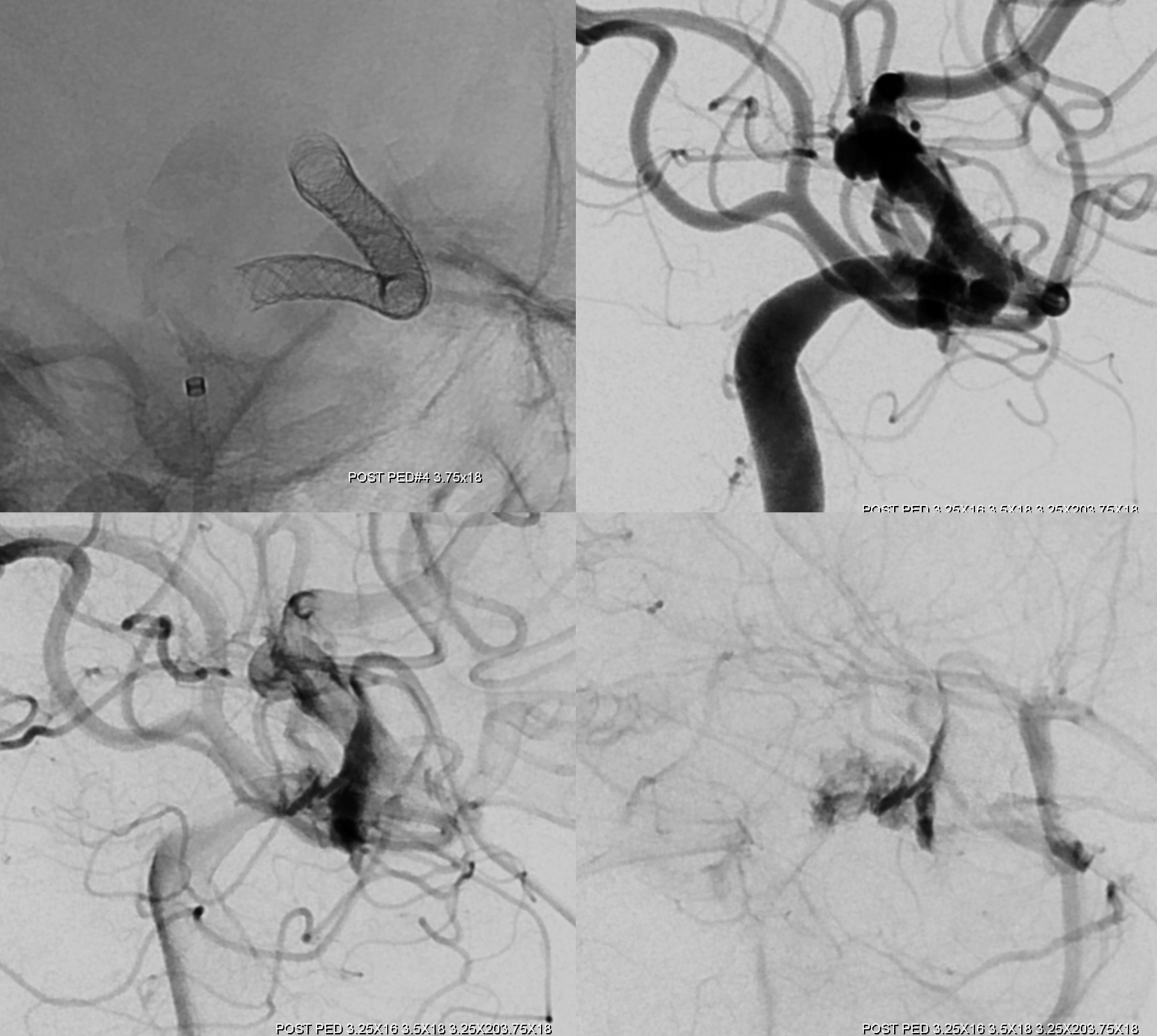
See the difference in coverage?
